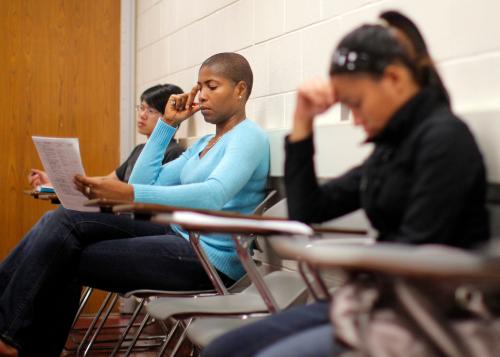Here are two things Americans love: inventiveness and upward mobility.The idea that becoming an inventor can offer a way to climb the income ladder is therefore an intoxicating one. More entrepreneurialism and more equality: who could be against that?
There are however some challenges here. First, entrepreneurs are, by definition, risk takers. When their risks pay off, they become rich and likely famous. But when they do not, they face financial ruin, unless they have a financial cushion.
Second, most of America’s inventors come from affluent families, at least on some measures. The odds of becoming a patent holder are very much higher for those from rich families, as Alex Bell, Raj Chetty, Xavier Jaravel, Neviana Petkova and John Van Reenen show in their just released paper “Who Becomes an Inventor in America? The Importance of Exposure to Innovation”. The rate of patenting among those who grew up in top quintile households is more than double the rate of those who grew up in households in the middle 40 percent of the distribution, according to data kindly provided to us by Raj Chetty and Neviana Petkova:
Even within the top quintile, the odds of taking out a patent are much higher in the top percentiles, as their paper shows:
Source: Bell, Raj Chetty, Xavier Jaravel, Neviana Petkova and John Van Reenen. “Who Becomes an Inventor in America? The Importance of Exposure to Innovation”. Available at http://www.equality-of-opportunity.org/assets/documents/inventors_paper.pdf.
There are obviously many factors at work here, including simply being aware of the process of applying for a patent. But if inventors are drawn largely from richer families, to the extent that their inventions are successful, intergenerational mobility will worsen rather than improve.
This is one area where market regulations may be worsening inequality, according to Brink Lindsey and Steven Teles in their new book, The Captured Economy: How the Powerful Enrich Themselves, Slow Down Growth and Increase Inequality. They argue that “over-juiced” intellectual property protections, which have expanded copyright and patent rights, are now barriers to both innovation and upward mobility.
Lawsuits by “patent trolls” who “specialize in amassing patent portfolios for the purpose of initiating lawsuits” now make up 62 percent of all infringement suits, at a direct cost of $29 billion in 2011. But there is no clear evidence that stronger patenting protection boosts innovation. After a thorough and balanced review, Lindsey and Teles conclude:
“The copyright and patent laws we have today therefore look more like intellectual monopoly than intellectual property. They do not simply give people their rightful due; on the contrary, they regularly deprive people of their rightful due.”
Politicians will no doubt continue to tout the potential of entrepreneurship and inventiveness as a path to the American Dream. But the growth of ‘weaponized defensive patenting’ identified by Lindsey and Teles suggests that if anything, they have become another means by which that dream is hoarded.







Commentary
Inventions and inequality: Class gaps in patenting
December 4, 2017